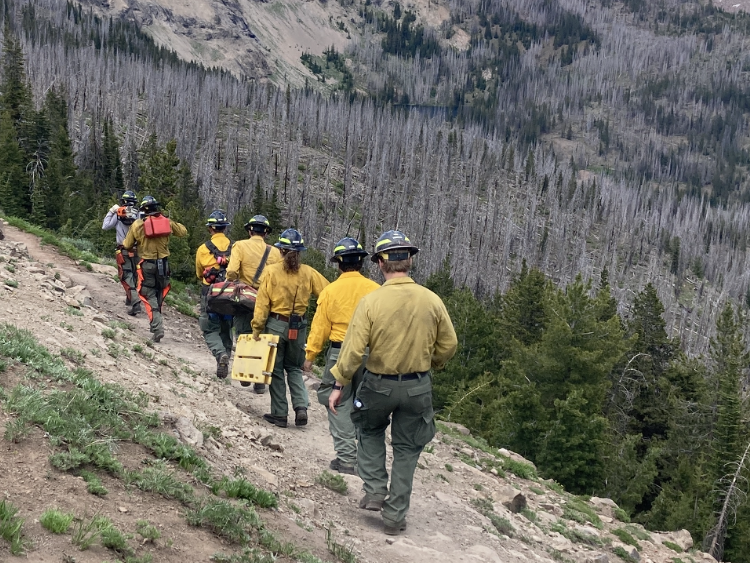Commentary: Proposed mountain bike trails raise alarm
Published 6:15 am Thursday, March 24, 2022

- Matt McElligott
There’s a storm brewing over the Ochocos. A storm big enough that it may affect all of Oregon’s national forests.
The Ochoco Mountains, which are southward extensions of the Blue Mountains, are located near the geographic center of Oregon on the Ochoco National Forest. Covering 845,498 acres of land, the Ochoco National Forest is home to more than 375 different species of reptiles, amphibians, birds and mammals. Also within these colorful mountains and lush valleys are many family ranches. Some of those ranches have been there for over 100 years.
The geographic center of Oregon is also home to one of the fastest-growing cities in the Western United States, Bend. People are flocking to Bend for its mild climate, beautiful scenery, and abundant outdoor recreation opportunities. Just travel north or south from Bend on Highway 97 and you will see for yourself the maddening increase in traffic.
The increase in population has increased the need for outdoor recreation on our national forests, and this is the epicenter of the storm brewing. The mountain biking group Central Oregon Trails Alliance, known as COTA, has proposed to the Forest Service a need for more trails to ride on.
A new trail system called Lemon Gulch has been proposed. The system would encompass 52 miles of bike trails with parking lots at trailheads in a 9-square-mile area in the Mill Creek drainage area of Crook County.
The Forest Service, by virtue of the 1976 Federal Land Policy and Management Act, or FLPMA for short, is required to manage all public lands based on multiple use. That means grazing, mining, hunting, fishing, hiking, birdwatching and, yes, even mountain biking.
The Forest Service proceeded with the COTA bike trail proposal under the guise of managing for multiple use. Yet the agency obviously ignored FLPMA where it clearly states the public lands must be managed in a manner that will protect the quality of scientific, scenic, historical, ecological, environmental, air and atmospheric, water resource, and archeological values; and that, where appropriate, certain public lands will be preserved and protected in their natural condition.
There is no way that jamming in 52 miles of trails into this area will preserve and protect the public lands in their natural condition. The law is also very clear on the process that an agency must abide by when making significant changes to the current use of the public lands it manages — in this case, dramatically increasing the human footprint in the Mill Creek drainage, specifically Lemon Gulch. The law says: No action concerning the proposal may be taken that would 1) have an adverse environmental impact or 2) limit the choice of reasonable alternatives.
The erosion and sedimentation from the trails will affect stream and water quality. Many additional people in a small area will adversely affect the wildlife population. It will degrade the natural plant population and increase noxious weed presence.
The major mistake that the Forest Service made in moving forward with this project is that it did not adequately notify the local grazing permittees or the adjacent landowners, as required by law. There was no direct mailing, contact, or notification provided to adjacent landowners, affected landowners, or existing special use permittees. The trail system has already been marked and flagged on the ground. The Forest Service has decided Lemon Gulch is the location and refuses to consider other areas in this process.
On KTVZ, the local Bend channel, there was a news story on mountain bike usage on public lands. A public affairs officer for the Forest Service is quoted as saying, “these trails are hurting the land.”
Why is the Forest Service pushing this through when they admit openly that it will hurt the land? The local people and local permittees are not against multiple use. They are against the size and scope of this project and the way it is being forced upon them. Their new slogan is, “Don’t Bend Prineville.”
Concerned members of the public are encouraged to attend the Crook County Natural Resources Advisory Committee meeting at 1 p.m. on April 13 in the Clover Building at the Crook County Fairgrounds. Opposition to the Lemon Gulch project will ask the committee to better convey the need for county commissioners to officially withdraw their support of the proposal until a larger community conversation takes place regarding recreational development in the Ochocos.
You can learn more about this issue and future town halls at the Don’t BEND Prineville Facebook group.









